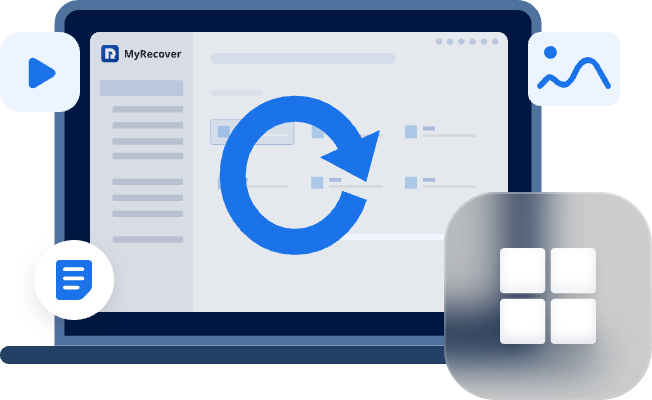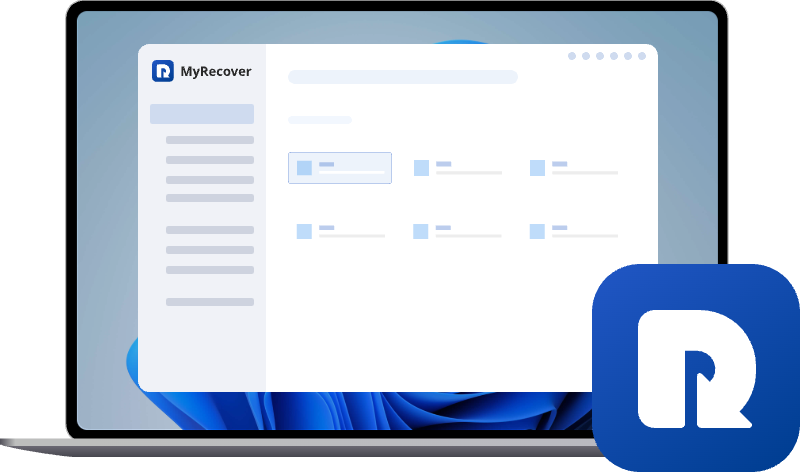How to Recover Data from Dead Laptop: 3 Simple Ways
A dead laptop doesn’t necessarily mean your data is gone forever. This guide walks you through three practical methods to recover data from a dead laptop on Windows. By the end, you’ll know exactly how to bring back your valuable documents, photos, and videos even if your laptop won’t power on.
Introduction
Few things are more alarming than pressing your laptop’s power button and realizing nothing happens, no light, no sound, no display. A completely "dead" laptop often triggers panic, especially if it contains important work files, personal documents, or irreplaceable project files.
Before you lose hope, remember that even if your laptop won’t turn on, your data may still be safe. The hard drive or SSD usually remains intact, and with the right methods and tools, you can recover data from a dead laptop effectively.
Common Reasons Why a Laptop Might Be "Dead"
A laptop can appear dead for many reasons. Sometimes due to minor power issues, sometimes due to deeper hardware failures. Understanding the cause can help you decide whether you can fix it yourself or if you’ll need professional help. Here are the most common culprits:
🧿Power Supply or Battery Failure
A faulty power adapter, drained battery, or damaged charging port may stop your laptop from powering on, even though internal components remain unharmed.
🔔Motherboard or RAM Malfunction
Hardware components like the motherboard or memory may short out due to overheating or static electricity.
💽Hard Drive or SSD Failure
If the internal storage is corrupted or physically damaged, your operating system won’t load.
💾Firmware or BIOS Corruption
Incorrect BIOS updates or system glitches may render a laptop temporarily unbootable.
📌System Update or Malware Issue
A Windows update failure or severe malware infection might make the laptop appear "dead" even though data still resides on the disk.
Preparation Before Data Recovery
Many users make the mistake of rushing into recovery without ensuring the drive is stable or properly connected; this can lead to overwriting or corrupting existing files. Before you start recovering data from a dead laptop, it’s important to take several precautions to guarantee a smooth data recovery process.
Keep Power Connected
Keep the power connected properly. If your computer hasn’t been turned on for a long time, its battery may have already run out.
Try Restart Your Computer
After ensuring the battery is fully charged, try restarting the computer again to rule out the possibility of a shutdown caused by power connection issues.
Get the Right Tools
Prepare the required adapter or enclosure for data recovery based on your hard drive model, as well as a fully functional computer and an USB drive.
How to Recover Data from Dead Laptop Windows 10/11
Once your setup is ready and your drive is safely connected, you can begin the recovery process. In this section, we’ll walk you through three simple ways to recover your data from a dead laptop even if it won’t turn on.
Method 1. Connect the Hard Drive to a Working Computer
If your laptop won’t power on, you can remove the hard drive or SSD from the unbootable laptop and connect it to another PC to recover your files. As long as the hard drive has not suffered any physical damage, this method has an extremely high success rate.
Step 1. Power off your laptop completely and remove its back panel carefully.
Step 2. Carefully remove the hard drive or SSD from the dead laptop.
This step requires extreme caution. Any physical damage to the storage device at this point will increase the likelihood of data recovery failure. If you are not professional in this area and worry about damaging the hard drive, you’d better move on to the next method.
Step 3. Use a USB-to-SATA/USB-to-NVMe adapter or an external enclosure to connect the drive to the prepared working computer.
Step 4. Once connected, you can open File Explorer to check the files in the storage device. If the files are accessible, back them up immediately.
However, if the drive is not recognized on Windows, you can try use the CHKDSK command to fix it.
Method 2. Use Robocopy Command for Data Transfer
If your computer can access WinRE or you have an installation medium, the Robocopy command can retrieve files from a dead laptop. It allows you to directly copy files (including directories) from the storage device to another drive, enabling data recovery without downloading any software.
Step 1. Insert a USB drive or external hard drive into the unbootable computer for a backup storage.
Step 2. Turn on your computer and interrupt the process 2-3 times, your computer will automatically enter WinRE. Then go to "Troubleshoot" > "Advanced options" > "Command Prompt".
Step 3. Run the diskpart command to check the target partition and the external hard drive volume number, then note them. Enter the following command:
Diskpart
List volume
Step 4. Type the command to copy the files from the dead laptop to the external hard drive:
robocopy [the source file path] [the destination file path] /E /COPYALL /R:3 /W:5
Before executing this command, you can also add /L at the end of the above command to run it in test mode. It will list the operations to be performed, allowing you to confirm whether the files and folders targeted by Robocopy are the ones you expect.
Once the process is completed, remove the external hard drive to check the copied files if the ones you want on another working computer.
Method 3. Recover Data from Dead Laptop with MyRecover
If you're uncomfortable with command-line, the professional data recovery tool like MyRecover will be your last sort. MyRecover is a comprehensive Windows data recovery tool capable of restoring files from formatted, corrupted, or unbootable drives. It’s ideal for those who want an easy, graphical interface without complicated commands. It is proficient in using a recovery bootable disk to start unbootable computers and recover data from them.

- 500+ Devices Support: HDDs, SSDs, USB drives, memory cards, cameras, PS series, and more.
- 500+ Data Loss Scenarios: PNG, MP4, ZIPS, Word, PPT, Emails, Archives, etc.
- 1000+ File Formats: Deletion, format, transfer failure, power failure, virus attacks.
- Filter and Search: Easily find specific files by name, type, or size.
Step 1. Download and install MyRecover on a working computer from Microsoft Store.
Step 2. Launch MyRecover and select "PC Crashed Recovery" section, choose "USB Boot Device" and click "Create".
MyRecover also allows you to create bootable media using ISO files, CDs, or DVDs.
The selected drive will be formatted. If there are any important files on it, you’d better back them up first.
Step 3. Wait for the bootable media creating successfully, then insert the USB into the dead laptop.
Step 4. Power on the laptop and enter BIOS to choose the USB drive to boot the computer.
Step 5. The laptop will automatically enter the interface of MyRecover, then select a drive where the lost files were stored to scan, then click "Scan".
Step 6. After the scanning, choose the files you would like to recover from the recoverable lists and click "Recover".
Step 7. Select a safe destination folder (ideally an external hard drive) to save the recovered files.
When the process is done, you can check the recovered files in the destination folder on another working computer.
Method 4. Professional Recovery Services
If your SSD or HDD is physically damaged, clicking, or not being detected even through adapters, it’s best to contact a professional recovery lab. Experts use cleanroom environments and specialized tools to restore data from severely damaged drives. Although more expensive, it’s the safest option when your drive suffers mechanical failure or NAND-level corruption.
The Bottom Line
A dead laptop doesn’t always mean dead data. By removing the drive, using recovery tools like MyRecover, or employing utilities like Robocopy, you can often recover data from a dead laptop safely. If you are seeking for a reliable and efficient data recovery tool, MyRecover ensuring your valuable data remains within reach, even when your laptop doesn’t power on.
For IT technicians and business users, the Technician Edition of MyRecover is especially powerful. It supports use on multiple devices with just one license, and serves as a comprehensive business data recovery solution tailored for enterprises and MSPs.


